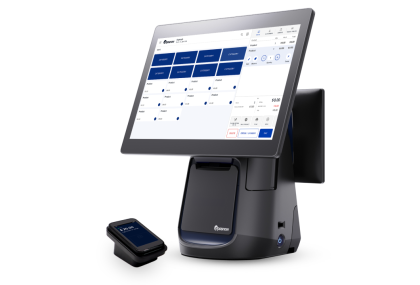Retail Pricing Optimization & How You Can Optimize Sales
Most retailers, and indeed businesspeople, would agree that business success is measured through profit. Some approach this by making the most profit on each sale, others by making just enough profit on a more significant number of sales.
Different businesses suit different models, but knowing the best price points for your business takes a lot of work. This process is called optimizing your prices. This involves finding the right price point for your products to make the most sales while maintaining decent profit margins.
To do this, you need to understand how pricing optimization works and what factors you need to consider. In this article, we will explore these topics in detail so that you can start optimizing your retail prices today.
What is pricing optimization in retail?
Put simply, pricing optimization is about pricing your products in a way that maximizes the total profit for the vendor. A well-priced product intrigues the customer and suggests value to them while being far enough above the production price cost to make the business money.
The vital point of a price optimization system isn't necessarily the profit margin but the perception of value. There are many retailers whose optimal prices are well above the cost price, yet consumers purchase the product in droves and consider the price fair.
Price optimization, therefore, is about researching consumer behavior, opinions, and sales habits in response to a business's prices and the prices of its competitors. Companies use price optimization tools and price optimization software to make adjustments and measure the success of those changes based on sales volume recorded at different price points.
The nuances of pricing strategy and pricing decisions made in different industries can vary wildly across various retail industries. In industries where a product is widely produced, such as the dairy industry, consumers can easily obtain the product from competitors. Although price elasticity (the change in demand for a product) is low, maintaining competitive prices is essential to making sales.

Retailers across the globe are selling with more speed and safety than ever using Epos Now's dedicated retail solutions. Epos Now provide retailers with hundreds of options allowing them to create bespoke systems that suit the way they operate:
- Choose from hundreds of apps and integrable partner programs to run accounting, marketing and other back-of-house functions in a way that suits you
- Use Epos Now Payments to incorporate card processing into your POS with simpler, easier style
- Manage your business stress-free with cloud technology that gives you instant access to the latest business data, from anywhere in the world!
How to find pricing strategies to suit your business model
We've outlined several retail pricing strategies below, but it's essential to recognize that price optimization strategies require a holistic outlook that relates to your overall business plan. Finding an optimal price point requires a plan to position your product within the market and an achievable goal for that product.
Your immediate response might be, "I want that product to make me money, of course!" but for many retailers, large and small, that's not the goal of every product. Some retailers price products intending to make maximum profits naturally, but others plan to attract customers through a lower price.
A great example of this is if your business has a star attraction on its shelves. If Product A is the kind of product everyone that comes through the door wants to buy and makes you a lot of money, you can use Product B to attract new customers with a lower price with the intention to obtain more potential buyers of the high-profit Product A.
The above demonstrates that to optimize pricing, many businesses need clear objectives for different products and a retail strategy that doesn't only focus on individual products but that forms a business plan to make the best use of everything you offer.
What difficulties do retailers face in price optimization?
Retailers must make several key calculations when deciding on price changes. Some of these are similar to those made during the initial pricing of the product, and some calculations need to be made using consumer data to improve product performance.
Often, retailers try to calculate optimal price points using the same method for all products. This might not be ideal, but most small and medium-sized businesses feel they have limited resources to spend on retail pricing analytics and try to use a one-size fits all approach.
The difficulty of pricing a product: understanding your cost prices
To begin, retailers need to accurately ascertain a basic cost-price for a product. This needs to incorporate several expenses that are paid to make the product available for purchase:
- The supplier price. How much did the supplier charge you to purchase the product? If you produce what you sell yourself, how much do your base materials cost, as well as any tools or machinery used during the production process? Usually, supply costs are recorded on receipts, and the price per item is calculated by dividing the amount paid by the number purchased.
- Delivery or transport expenses. If your business pays to have its products delivered or has its own vehicle used to transport the goods, divided between all purchased products, this adds a small amount to the cost.
- Utility and rental expenses. It costs a large amount of money to keep a business well-lit, pay for the electricity to run lights, fridges, your POS, and other electrical items, and run other utilities for the staff. Then there's your rent, licenses, and tax. This money needs to be recuperated through your sales, so considering these as part of your cost price can help ensure you charge a reasonable amount for your products.
- Wages. When a retailer makes a sale, they always need someone to cater to the customer. Staff can greatly benefit your business, but you'll need to pay them using product sales, so considering your wage bill when pricing your products is important.
- Packaging and labeling. If you make your own packaging, that can also add an extra expense to production costs. It's essential to bear in mind all sorts of little expenses such as these, as a business may think itself more profitable than it is while wondering where those profits went as they are eaten into by a large number of minor expenses they're not thinking about.
Once you've settled on a cost price for your product, once again, price optimization software such as that incorporated into your retail POS system can help ensure you calculate your profit margins from an accurate baseline. You can then start changing prices accordingly. Nevertheless, some retailers spend years trying to find the right model that provides the impression of value to customers and dependable profits to the business.
Retail price optimization models
The approach a business takes can heavily influence retail price optimization. So if a business wants higher sales volume, then pricing competitively is a must.
Competitive pricing model
In most cases, the optimal price point for a business will be lower than others selling the same product. This is so important that many in the retail business price their products by researching where else the product is available and setting a slightly lower price.
With effective marketing, making consumers aware of the value you provide should allow you to capture a larger market share. Knowing what your competitors are selling a product for means that you can choose how much to take off and avoid leaving money in the customer's pocket while ensuring you're the business to beat.
 How small businesses can use competitive pricing
How small businesses can use competitive pricing
The downside of competitive pricing is that many businesses are already competing to provide the best value. Smaller retailers cannot source products at the same prices as larger ones and will struggle to compete in this way.
Depending on your industry, pricing competitively to a sufficient degree might mean lowering your profit margins to unsustainable levels. Supermarkets, for instance, already sell groceries so cheaply that smaller grocers cannot hope to compete.
Competitive pricing can still be useful, though. While not every product you sell will be the cheapest, selling one product for low or even no profit can provide the opportunity to market the value of that product to capture new customers. The business can then upsell other products at higher prices to make good money.
Loss-leader pricing
The kind of retail price optimization described above, using certain products to acquire new customers, is a competitive pricing model more akin to the loss-leader approach.
Loss-leaders are a more extreme version of competitive pricing enacted on specific products, especially products that make a natural partner of other products. For example, a business might sell pints of milk at a loss but make good money on their cereals (or vice versa). A sports shop that sells footballs for less than they need to break even might hope to make that money back on football boots and trainers.
When trying to understand whether this is effective price optimization, a business needs to look at more than profits on individual products. To measure success, they might look at the total profitability within broader product lines, sales volumes, or customer acquisitions.
Penetration pricing
Penetration pricing seeks price optimization to capture the market but is designed for limited-time use. The difference between penetration pricing and loss-leaders is that penetration pricing is best used on a business's more valuable products without necessarily expecting to make money back immediately.
The aim of penetration pricing is to obtain new customers, penetrate the market, build relationships with those customers and establish a brand reputation that will outlast these unprofitable prices.
Once more, this may not be something all businesses can afford to do, and not all industries have a consumer demand that a business can benefit from. Nevertheless, it is possible to create long-term benefits by generating an initial sales volume.
Cost-plus pricing and the keystone model
Cost-plus has been a popular method of retail price optimization for its simplicity and speed. Retailers with many shelves to fill often have a baseline profit margin they hope to take on many products.
When applying cost-plus pricing, retailers calculate the cost-price, sometimes factoring in all expenses listed above and sometimes only the supplier price. Then they add a base percentage onto that fee to determine the resale price.
For this model, the crucial point is the percentage they add on. Most smaller retailers tend to use something between 25 and 50%, which provides a healthy profit but ensures they remain competitive and can expect to make a good number of sales.
Keystone pricing goes much further and doubles the wholesaler price. Depending on your industry norms, your competition, and the scarcity of the product, keystone pricing might be a good model to follow, or you could end up pricing your product a lot higher than the competition.
Measuring the success of your products using price optimization tools can help determine if the markup percentage you've chosen has given you optimized pricing.
Epos Now: a POS with price optimization software you can count on
Epos Now provides retailers everywhere with a POS system that collects transaction data automatically. Epos Now systems create flexible, downloadable reports split by product, category, time of sale, and in innumerable other ways, ensuring you know your business better than the competition.
As an Epos Now customer, you can:
- Create a complete business suite on a solid POS foundation with integrated payment processing services, an online store, multi-site, and multi-channel options to enter every market
- Sell your way with hardware and software options for your industry
- Sell safely and speedily with the latest transaction technology
- Access reports and manage prices and inventory control on-site or off, night or day, through cloud technology
To find out more about Epos Now solutions, submit your details below and speak to a member of our expert team.
Know more, see further ahead, and stay in front with the best business software through an Epos Now technological tool-box




